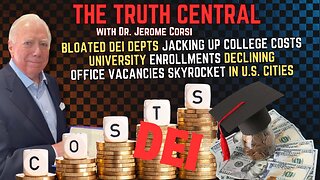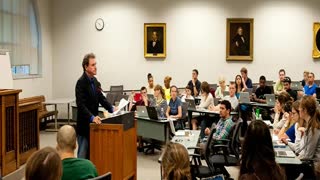Universities are on a reckless spending spree and students are footing the bill
Universities are on a reckless spending spree and students are footing the bill
Public universities in the United States are on an out-of-control and tone-deaf spending spree and students are footing the bill. There is a culture of unrelenting growth and prioritizing raising revenue from tuition and fees rather than being financially prudent with costs. Spending includes new academic buildings, dorms, sports programs, and layers of administrative staff, in part to lure wealthy students. Students are being forced to take on more and more debt while universities and college show little or no regard for how much money they are spending. I will argue that students do not have resources to continue to fund the overly extravagant, and excessively expensive projects of universities.
Tuition and fee revenue per student has soared by double digits in the past 20 years at almost every flagship university in the country. The Wall Street Journal reports that median spending at flagship universities rose 38% between 2002 and 2022. Revenue was more than double from undergraduate and graduate tuition and fees than the two decades prior. Despite enrollment gains, this amounts to a 64% increase for the average student which far outpaces just about any other expense an American family faces.
The United States faces a $1.6 trillion federal student debt crisis.
University of Kentucky spent an average of $805,000 per day for more than a decade. Despite the students here being some of the poorest in the country, they still had to come up with $18,693 to attend the 2021-2022 school year. The University of Kentucky took in 70% more in tuition and fee revenue per student than it did two decades ago
Students at the University of Oklahoma faced some of the biggest tuition increases in the country while the school spend millions on acquiring and renovating a 32,000 square foot Italian monastery for a study abroad program. Beginning in 2009, the university spent $14.3 million to purchase and renovate a monastery in Italy to house a new study-abroad program. The monastery features a landscaped garden, faculty apartments, and classrooms that have painted frescoes. The university claimed it was paid for by private gifts and university funds.
Public universities are quick to shift blame to reduced state funding. While three-fourths of states did cut their funding, universities did not reduce their spending as a result. Instead, they raised tuition far beyond what was needed to fill the gap. For every $1 lost in state funding, universities increased tuition and fees by $2.40.
Many university officials fail to understand their complex budgets and resort to just increasing spending every year to compensate. The universities are not held accountable by trustees who rubber stamp anything that lands on their desks. Public university trustees approved 98% of cost increasing proposals they reviewed. It is basically an automatic approval of whatever the university administration want.
Salaries and benefits usually account for more than half of a university operating budget. These rose by roughly 40% since 2002. Between 2017 and 2022, the number of employees that were directors or associate directors doubled.
Inflation adjusted spending on athletic coaches rose by 50% between 2010 and 2022.
Lack of Accountability:
Schools inconsistently disclose spending making it nearly impossible for anyone, especially the public, to review how tuition and tax dollars are being spent.
Colleges are not required to track expenses in a uniform way in part because universities view audits as a requirement rather than a tool for public accountability. The Education Department often find that college finances contain errors and do not match audits. Schools are free to categorize spending however they wish on audited financial statements making it impossible to compare even a single school over time, much less different schools.
Universities wanted to attract students with top test scores and minimal need for financial aid so they built state-of-the-art recreation centers and dorms. All the other students were responsible for paying for these amenities.
Schools pass on the tab of their aggressive expansions even in the nation’s poorest states. Even with increased financial aid for low-income students, this still does not fully offset rising tuitions for these families. Public universities were intended to be affordable for American families.
Works Cited:
https://www.wsj.com/articles/state-university-tuition-increase-spending-41a58100?mod=hp_lead_pos7
Tags:
college tuition, college, tuition, free college tuition, free tuition, paying for college tuition, college debt, college tuition negotiation, college tuition cost, college tuition price, college tuition costs, average college tuition, tuition free colleges, college tuition price history, paying for college, free college tuition california, free college, college costs, community college, cost of college, college degree, college, cost of college, college cost, college costs, how much does college cost, college tuition, opportunity cost of going to college, average cost of college, price of college, going to college, cost to go to college, should i go to college, getting accepted to college, college cost breakdown, why should i go to college, cost of college in 2021, estimating cost of college, tuition, university, college tuition, free tuition, university tuition, free tuition fee universities, free university, tuition fee, tuition fees, no tuition universities, tuition free universities, free tuition universities
-
 8:56
8:56
TheDrNasirShaikhShow
6 months agoShocking Tax Revelation - Students Stunned by Surprising Amount of Tax Burden is on the Rich
78 -
 5:13
5:13
HopeFilled Financial Coaching
11 months agoIs Paying For College Without Debt Possible? - Listener Question #5
7 -
 48:59
48:59
The Truth Central
4 months agoBloated DEI Departments Jacking Up College Costs
312 -
 15:48
15:48
CentsAble Chat
2 years agoBudgeting For School Choice
139 -
 2:37
2:37
Top Usa NEWS FEEDER
1 year agoFamous College Ranker Overhauls System After Law Schools Pull Out Due to Equity Concerns
10 -
 9:19
9:19
TheDrNasirShaikhShow
3 months agoWill Students Donate Their Own Money For Free Tuition For Illegal Immigrants?
40 -
 10:25
10:25
Ken McElroy Official Channel
10 months agoStudent Loan Freedom: How Airbnb Mid-Term Rentals Saved Me from Debt
54 -
 9:19
9:19
TheDrNasirShaikhShow
3 months agoShocking Truth: Students WON"T Donate Their Own Money for Tuition of Illegal Immigrants
35 -
 2:56
2:56
TheCollegePlanningSpecialist
4 months agoThe College Scholarship Myth: Unveiling the Costly Game Played by Universities
18 -
 3:26
3:26
JbQuinnon
1 year agoOakland's Holy Names University, has been put up for after defaulting on a $49 million loan.
31